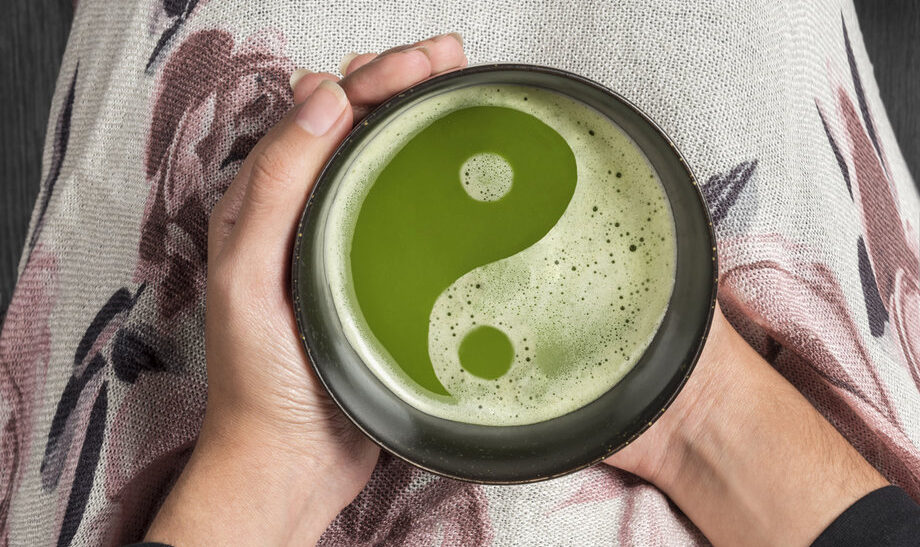Chinese Medicine For Pain Management: Relieving Chronic Pain Naturally

Chinese Medicine, with its holistic approach and emphasis on natural healing, has gained recognition as an alternative therapy for pain management, particularly in the case of chronic pain. This article explores the principles and practices of Chinese Medicine that contribute to relieving pain naturally.
Acupuncture, one of the key components of Chinese Medicine, is examined for its effectiveness in pain relief. Additionally, herbal remedies, dietary changes, Tui Na massage, and mind-body practices such as Qi Gong and Tai Chi are explored as potential methods for pain management.
Moreover, the article delves into the role of mindfulness and meditation in providing relief from chronic pain. Finally, the integration of Chinese Medicine with conventional treatments is discussed, highlighting the potential benefits of combining both approaches.
By understanding and utilizing the principles and techniques of Chinese Medicine, individuals suffering from chronic pain can explore alternative methods for pain relief that prioritize natural healing and overall well-being.
The Principles of Chinese Medicine
The principles of Chinese medicine provide a holistic approach to pain management, focusing on balancing the body’s energy and promoting overall well-being. According to Chinese medicine, pain is caused by an imbalance or blockage of energy flow in the body.
To address this, Chinese medicine practitioners aim to restore the balance of energy by using various techniques such as acupuncture, herbal medicine, and therapeutic exercises like Tai Chi or Qigong. These techniques are believed to stimulate the body’s natural healing mechanisms and promote the flow of vital energy or Qi.
Chinese medicine also emphasizes the importance of treating the root cause of pain rather than just the symptoms. This approach aims to achieve long-term pain relief and improve overall health and well-being.
Acupuncture: A Key Component of Pain Relief
Acupuncture, as an essential element of pain relief, plays a pivotal role in addressing various types of pain. This ancient Chinese practice involves the insertion of thin needles into specific points of the body to stimulate energy flow and restore balance. Its effectiveness in pain management has been widely acknowledged and supported by scientific research.
Acupuncture not only provides immediate pain relief but also promotes long-term healing by addressing the root causes of pain. Its benefits extend beyond physical pain, as it can also alleviate emotional distress and improve overall well-being. Acupuncture has been found to be particularly effective in relieving chronic pain conditions such as migraines, arthritis, and back pain. It offers a holistic approach to pain management, emphasizing the interconnectedness of the mind, body, and spirit.
- Alleviates pain by releasing endorphins, the body’s natural painkillers
- Reduces inflammation and promotes healing
- Restores energy flow and balances the body’s Qi (life force)
- Enhances relaxation and reduces stress levels
Herbal Remedies for Chronic Pain
Herbal remedies have emerged as a promising alternative for individuals seeking natural solutions to manage chronic pain. Traditional Chinese medicine (TCM) utilizes a variety of herbs to alleviate pain and restore balance in the body.
One commonly used herb is Corydalis yanhusuo, which has been shown to have analgesic properties by targeting the body’s pain receptors.
Another herb, Boswellia serrata, possesses anti-inflammatory effects and has been used to relieve pain associated with conditions such as arthritis.
Additionally, turmeric, with its active compound curcumin, has been found to have analgesic and anti-inflammatory properties.
However, it is important to note that the effectiveness of herbal remedies may vary depending on the individual and the specific condition being treated. Further research is needed to fully understand the mechanisms and potential benefits of these herbal remedies for chronic pain management.
Dietary Changes for Pain Management
Dietary adjustments can play a significant role in alleviating discomfort and promoting overall well-being. Chronic pain sufferers can benefit from incorporating certain foods into their diet while avoiding others.
Anti-inflammatory foods such as fatty fish, leafy greens, and berries can help reduce pain and inflammation. These foods are rich in omega-3 fatty acids and antioxidants, which have been shown to have anti-inflammatory properties.
On the other hand, processed foods, sugary snacks, and alcohol should be limited or avoided as they can exacerbate pain.
Additionally, maintaining a healthy weight through a balanced diet can help alleviate strain on joints and muscles, reducing pain.
It is important to consult with a healthcare professional or registered dietitian to develop an individualized dietary plan that addresses specific needs and preferences.
Tui Na: Chinese Massage for Pain Relief
Tui Na, a traditional Chinese manual therapy technique, has been used for centuries to provide pain relief and promote overall well-being. It involves various manipulations, such as kneading, pressing, and stretching, to stimulate the body’s energy flow and restore balance.
Tui Na is based on the principles of Traditional Chinese Medicine (TCM), which views pain as a result of imbalances in the body’s energy pathways. By applying pressure on specific acupuncture points and meridians, Tui Na aims to remove blockages and restore the smooth flow of Qi, or vital energy.
Research suggests that Tui Na can effectively alleviate chronic pain, including musculoskeletal conditions, headaches, and fibromyalgia. It is believed to work by increasing blood circulation, reducing inflammation, and promoting relaxation. However, more high-quality studies are needed to fully understand the mechanisms and efficacy of Tui Na for pain relief.
Qi Gong and Tai Chi: Mind-Body Practices for Pain Management
Mind-body practices such as Qi Gong and Tai Chi have been explored as potential strategies for managing pain and promoting overall well-being.
Qi Gong, a form of traditional Chinese exercise, involves gentle movements, deep breathing, and meditation to cultivate and balance the body’s vital energy, known as Qi. Studies have shown that Qi Gong can effectively reduce chronic pain and improve physical function in individuals with various pain conditions, such as fibromyalgia and osteoarthritis.
Tai Chi, another mind-body practice, combines slow, flowing movements with deep breathing and relaxation techniques. Research suggests that Tai Chi can alleviate chronic pain, enhance physical function, and reduce the reliance on pain medication.
These mind-body practices may help individuals develop a greater sense of self-awareness, improve body mechanics, and enhance the mind’s ability to regulate pain perception, ultimately leading to better pain management and overall well-being.
Mindfulness and Meditation for Pain Relief
Mindfulness and meditation have gained recognition as effective practices for pain relief. These techniques, rooted in ancient Buddhist traditions, involve bringing one’s attention to the present moment without judgment. By cultivating a non-reactive and accepting mindset, individuals can develop a greater awareness of their sensations, thoughts, and emotions related to pain.
Research has shown that mindfulness and meditation can reduce pain intensity and improve overall well-being in individuals with chronic pain conditions. These practices have been found to have positive effects on pain perception, pain-related distress, and the ability to cope with pain. Moreover, mindfulness and meditation can also enhance the brain’s ability to regulate pain signals, leading to long-term changes in the pain experience.
Incorporating mindfulness and meditation into pain management strategies offers a natural and holistic approach to alleviating chronic pain.
Integrating Chinese Medicine with Conventional Treatments
Integrating traditional Chinese medical practices with conventional treatments provides a comprehensive approach to addressing the complexities of chronic pain. Chinese medicine, with its holistic perspective, emphasizes the balance and flow of vital energy, known as Qi, throughout the body.
This approach involves various techniques, such as acupuncture, herbal medicine, and dietary therapy, to restore Qi balance and alleviate pain. Acupuncture, in particular, has gained recognition in Western medicine as an effective complementary treatment for chronic pain. By stimulating specific points on the body with thin needles, acupuncture helps release endorphins, reduce inflammation, and modulate pain signals.
Additionally, Chinese herbal medicine offers a wide range of natural remedies that can be used alongside conventional medications to manage pain. These integrative approaches allow for a more personalized and comprehensive pain management strategy, addressing both the physical and energetic aspects of chronic pain.
Frequently Asked Questions
What are the potential side effects of acupuncture for pain relief?
Potential side effects of acupuncture for pain relief include minor bruising or bleeding at the insertion site, temporary worsening of symptoms, infection, nerve damage, and organ injury if performed by an unqualified practitioner.
Are there any dietary restrictions or limitations when using herbal remedies for chronic pain?
There may be certain dietary restrictions or limitations when using herbal remedies for chronic pain, as some herbs may interact with certain medications or have potential side effects. It is important to consult with a healthcare professional before incorporating herbal remedies into your diet.
Can Tui Na massage be used to treat acute pain conditions?
Tui na massage can be used as a treatment for acute pain conditions. It is a Chinese medicine technique that involves various manipulations and pressure points to alleviate pain and promote healing.
How long does it typically take to see results from practicing Qi Gong and Tai Chi for pain management?
The time it takes to see results from practicing qi gong and tai chi for pain management varies depending on individual factors such as the severity of pain and consistency of practice.
Is it safe to combine Chinese medicine with conventional pain medications?
Combining Chinese medicine with conventional pain medications is generally safe, but it is important to consult with a healthcare professional. Potential interactions and side effects should be considered, as well as individual circumstances and medical history.







